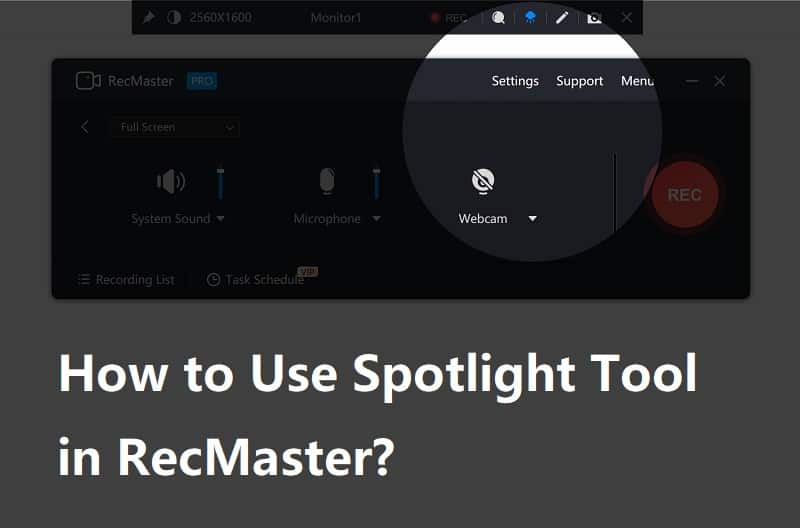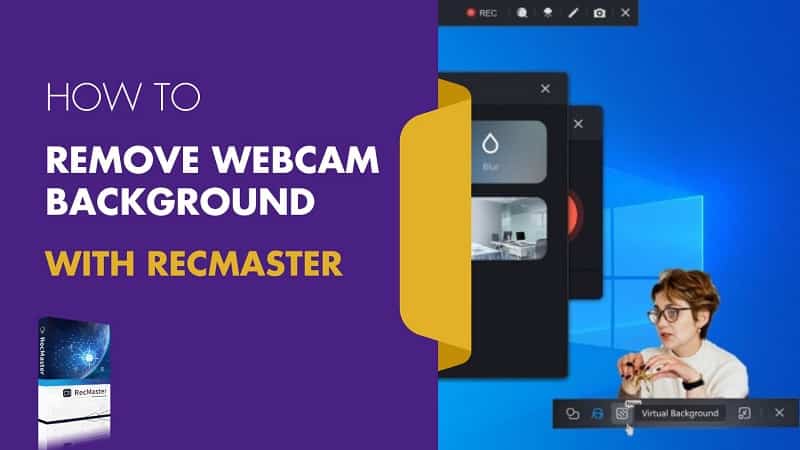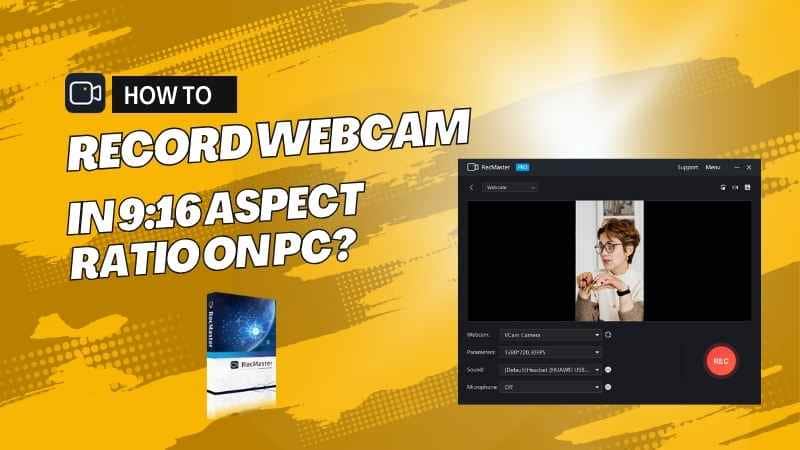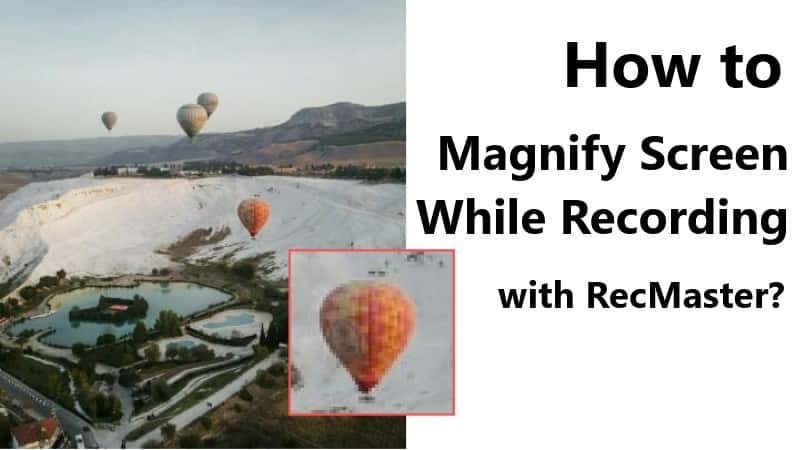Get the best OBS settings for recording, even you are a newbie and has a low-end PC to use OBS recorder.
OBS (Studio), full name Open Broadcaster Software, is a fantastic open source live broadcasting and screen recording program. As cross-platform software which is compatible well with Windows, macOS and Linux systems, OBS appeals to a large number of people to initiate their live events or screencasting things on PC easily. Live streamer, vlogger, gamer, marketer, educator, and even the general public could make their ways with this freebie.
However, due to its open-sourced nature and various advanced settings, many beginners are not so knowledgeable about how to record screen with OBS and how to configure OBS for either streaming or recording. In view of this, and also considering most of our customers are entry-level video makers, this post will mainly center attention on best OBS settings for recording, saving you much time on the digging around of answer.
Table of Contents
An Overview of Available OBS Settings for Recording
Before getting down to the key point, some facts first to help you understand everything related clearly.
1. OBS can adds and displays whatever sources in one or more scenes with transition.
On the main UI, you are enabled to let OBS recognize and show any screen app, webcam, and audio sources you want to record with OBS. Simply click the “+” plus icon to select and make it happen.
2. OBS is able to record at your monitor resolution and scale it to another one.
Under Video settings, OBS gives both Base and Output Resolution options for recording and downscaling if it’s necessary. Put it in a simpler way, if they two obtain the same size, there’s no scaling thing. If the output size is smaller than base canvas, there’s a downscaling. Generally, upscaling (outputting resolution is larger than the base one) is not recommended, because there will be an obvious quality loss.
3. OBS gives Simple and Advanced output recording modes for users at different computing levels.
These two setting modes located under Output are available for both Streaming and Recording. For Recording, Simple mode only offers access to basic settings like Recording path, quality, format, and encoder. While Advanced mode delivers two another types still – Standard &Custom Output (FFmpeg) – for more precise adjustment. In addition, Audio and Replay Butter are picked out as two standalone sections for you.
4. More details about the Advanced mode for OBS recording?
Simple mode only has 5 general settings to decide saving directory, quality (only three levels besides “Same as stream”), format (6 common used ones including MP4/MKV/FLV), encoder and muxer settings roughly. In other words, it’s more suitable for green hands to do one-click recording. For senior video creators who want to define the recording more accurately like: customize a fixed video/audio bit rate, control the rate, apply some other container format, produce screen video with multiple audio tracks, set the keyframe interval value, preset the CPU usage, and so forth.
5. If you’re a noob, OBS has built an Auto-Configuration tool in for optimized recording!
Once you click to open the Auto-Configuration from Tools drop-down menu, the tool will work out an estimated settings for an ideal recording according to your preference. Apply them if you don’t want to do further settings manually.
Best OBS Settings for Recording on Computer
For middle- or high-end machine and more fast-paced activity capture like gameplay, you can check the following settings to produce a high-quality screencast:
| Settings | Options | For Normal PC | For Low-end PC |
| Video | Base (Canvas) Resolution | The default one that’s exactly your monitor display. | The default or any other |
| Output (Scaled) Resolution | 1920 x 1080 | 1280 x 720 or lower | |
| Downscale Filter | Lanczos (Sharpened scaling, 36 samples) | Bicubic, Area or Bilinear | |
| FPS value | 60fps at Common FPS Value; or any higher value at Integer FPS Value |
30 fps or lower | |
| Output | Simple -> Recording | Any quality level according to your requirement on size; MP4/FLV; Hardware encoder first: NVENC > QSV > software x264 |
High quality MP4 Hardware encoder first |
| Advanced -> Recording -> Standard | MP4/FLV/MKV (Choose MKV for multi-track recording); Hardware encoder first: NVENC > QSV > software x264; Bit control to CQP or VBR; B Frames to 2; Video bite rate to 4000Kbps or higher; Target usage to quality or any one you like; Profile to high; Keyframe Interval to 0 or 2; CPU usage preset to a not-so-fast option… |
… Rescale output to a lower resolution; Video bite rate to 2000Kbps or lower; … Profile to main or baseline; CPU usage preset to fast related… |
|
| For NVENC encoder: CQP’s CQ Level to 15; Keyframe Interval to 2; Preset: Max Quality; Profile: High; GPU value to 0; Max B-frames: 2 (increase it to 4 for slow motion) |
For NVENC encoder: Lower the CQP’s CQ Level below 15 or use VBR; Lower-quality option for Preset and Profile; … |
||
| Advanced -> Recording -> Custom Output (FFmpeg) | More container, video encoder, and audio encoder choices; Hardware encoder first; Similar best settings recommendation with Standard; Audio bit rate to 320Kpbs … |
… Hardware encoder first; Audio bit rate to 160Kpbs or lower; Other settings the same with Standard … |
|
| Audio | General | Keep Sample Rate (44.1 kHz) or others by default; For multiple track recording, enable them here. Keep them by default. |
|
| Advanced | Video | A place to choose renderer type, color/format/space/range for advanced users. | |
| Recording | Tick automatically remux to MP4 if necessary. | ||
Some Extra Notes and Tips
- If you are so new to OBS software and want to own an OBS alternative for easier one-click recording, you can move on to RecMaster screen recorder to create high-quality screencast in clicks.
- 60fps is far more recommended for high quality capture. (☛How to Record Screen at 60FPS )
- FLV, although not so popular as MP4, is claimed as a good format for file recovery when your computer crashes, turns off or encounter any other unexpected error during the recording.
- These recommended best settings for OBS recording is totally based on the latest 26.0 version currently. So if your version doesn’t catch up yet, you may have no chance to find out some new options line NVENC encoder. Surely the premise is that your hardware is qualified for using this encoding. (☛Official NVENC Guide)
- All the best OBS recording settings mentioned earlier are a gathering of user feedbacks and official resources, which are not suitable for all scenarios. Hence, we strongly encourage running at least one actual test to ensure the settings are totally OK for a desired recording. If there’s anything wrong, fine tune the related options to test again. In most cases, if you are not so stick to a perfect and high quality recording, you can work it out anyway.
- Sometimes, due to software or system update, or improper settings, your OBS capture may show up as a black screen, it’s resolvable by following this troubleshooting guide of OBS black screen as long as you are not grabbing any copy protected content.
RecMaster – An Easier Screen Recorder with Best Settings by Default
A great screen recorder, especially for noobs, would be the one that’s easy-to-use, fast-to-configure, and can record anything (DRM-encrypted excluded) displayed or displaying on the screen. RecMaster is such a versatile and beginner-friendly program that’s compatible with both Windows and Mac. With this tool, you can document any on-screen actions, film PC games without lag, save general unprotected streaming files, record video presentation with webcam and narration simultaneously, and also capture webcam/audio only without desktop image.
Multiple key recording modes
● Game Mode: An optimized mode for capturing gameplay on PC more efficiently, especially for those games using DirectX tech like League of Legends, CS GO etc.
● Full Screen: The most commonly used recording type for users to keep a recording of the whole desktop including system tray.● Custom Area: Another top used mode for personalized-region recording, which is usually utilized for reporting bugs, shoeing windowed app operation, making 720p screencast, horizontal mobile video or the similar.
● Webcam: An attached webcam recording functionality to shoot the integrated or external facecam video at will.
● Audio Only: A tool that helps you extract system sound, microphone voice or they two at the same time.
A-B-C steps: Pick a proper recording mode -> Use the best recording settings by default or check to re-define them to what you want -> Click REC to start the recording, during which you can annotate it with a drawing tool -> Stop it.
Ending
That’s all about best OBS settings for recording and how its alternative – RecMaster works. If you still have any question or suggestion on either, feel free to send us via email.

RecMaster
Screen recording made easy.
Record every moment on your PC or Mac within few clicks.
Download Download
-
How to Record Tutorials Like a Pro Using RecMaster?
-
The Top Halloween Screen Recorder Deals 2025
-
Step-by-Step Guide: How to Record Gameplay Without Lag?
-
RecMaster’s Secret Weapon: The Full Guide to Using the Annotation Tool for Killer Tutorials
-
RecMaster Pro-Tip: Direct MP3 Output for Scheduled Recordings (Audio-Only) 🎧
-
How to Promote Your Game with a Stunning Gameplay with RecMaster?
-
The Ultimate Guide: How to Record Mafia: The Old Country Gameplay with RecMaster?
-
How to Record Gemini Storybook with RecMaster?
-
How to Record Bendy: Lone Wolf Gameplay with RecMaster?
-
How to Set 1-Click Beauty with RecMaster for a Better Look?
-
How to Record in the Best Video Quality with RecMaster (with VBR or CBR)
-
How to Blur Your Webcam Background in RecMaster: A Quick Guide
-
How to Use Spotlight Tool in RecMaster?
-
How to Remove Webcam Background with RecMaster (Windows Tutorial)
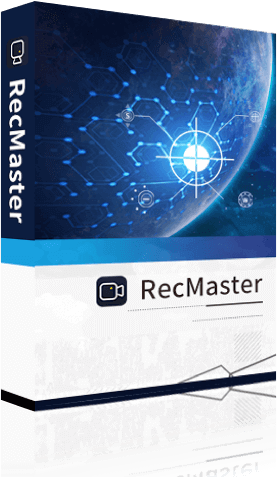
RecMaster – Record Every Moment on Your Computer Screen
Record 1080p or even 4K clips at 60fps to maintain the high quality still.
Flexible settings for mouse cursor effects, watermark and annotations.
Preloaded with recording scheduler, video editor. Allow one-click sharing.
Related & Hot Articles
Subscribe to keep up with the latest software discounts , news, and updates.


